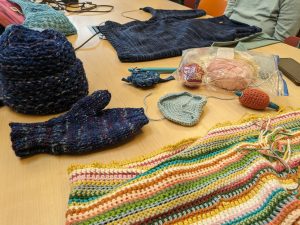
When I started my first library job in 2022, one of the main things I noticed was the sense of community that sprung up almost immediately. To be fair, that was why I’d changed careers in the first place — coming off a few years of pandemic-induced isolation in an industry that didn’t feel connected to anything, I wanted to feel like I was doing something that was helping someone. Even as a newbie in what Michael Stephens calls “the ultimate service profession”, that’s exactly what I was doing. Things started small, of course. I helped people check books in and out, helped them navigate the stacks and the library website and the ever-frustrating printers. But as time went by, those little interactions started to build relationships. Patrons would see me outside of the library, and say hi. We’d get into little conversations about everything and nothing. Eventually, some patrons felt comfortable enough to ask for more complex things, like help calling the electric company to understand a bill, or finding a lawyer who specialized in estate law.
While I was building up those relationships myself, I saw the same thing happening between patrons who, without the library, otherwise never would have met. Caregivers in the children’s area would trade childcare tips and recommendations for nearby services as their children played together, then, upon discovering that they lived quite near each other, would arrange play dates outside the library. A new member of the knitting and crochet group who was new to the craft would join, learn from existing members, and in a few months would be teaching new members herself. A senior who came in every morning to read the newspaper, upon learning that we had weekly movies in the afternoons, would join one, and then become a founding member of a cribbage club with others he’d met there.
I think this network of relationships, this fertile ground for new connections, as is least in part what David R. Lenkes (as quoted by Sally Pewrainangi) meant when he said that “libraries are infrastructure of the community”, that they are “part of a powerful platform that enables our communities to succeed”. Using a welcoming environment to build trust, libraries can provide a place where not only library staff help the patrons by providing them with reliable information and robust services, but patrons can help each other simply by getting to know each other. In other words, by building community.
Pewrainangi, S. (2014). A beautiful obsession.
Stephens, Michael. (2016). The Heart of Librarianship.